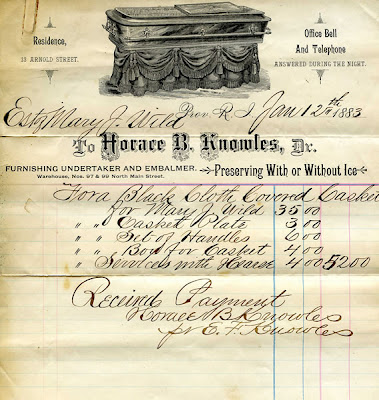Funeralia consist of memorial cards, funeral service programs, billheads, undertakers' announcements, printed fans, and printed armbands or ribbon badges are all ephemera. I know, kind of a morbid subject for Easter, but these billheads are certainly interesting. Did anyone see the woman's mourning ring collection on Antiques Roadshow last week? I have to say, the rings were neat, but I never would have thought to collect them. Here are several examples of funeralia billheads - note that most have coffins and some have the hearse carriages on them. The cameo coffin is an excellent billhead - I can't get vampires out of my head everytime I see it. I also like the early Australian billhead. I found a website that will hopefully yield more Australian billheads for a future post. Check out The Victorian Funeral for more interesting information - limited availability on google books.









Comments